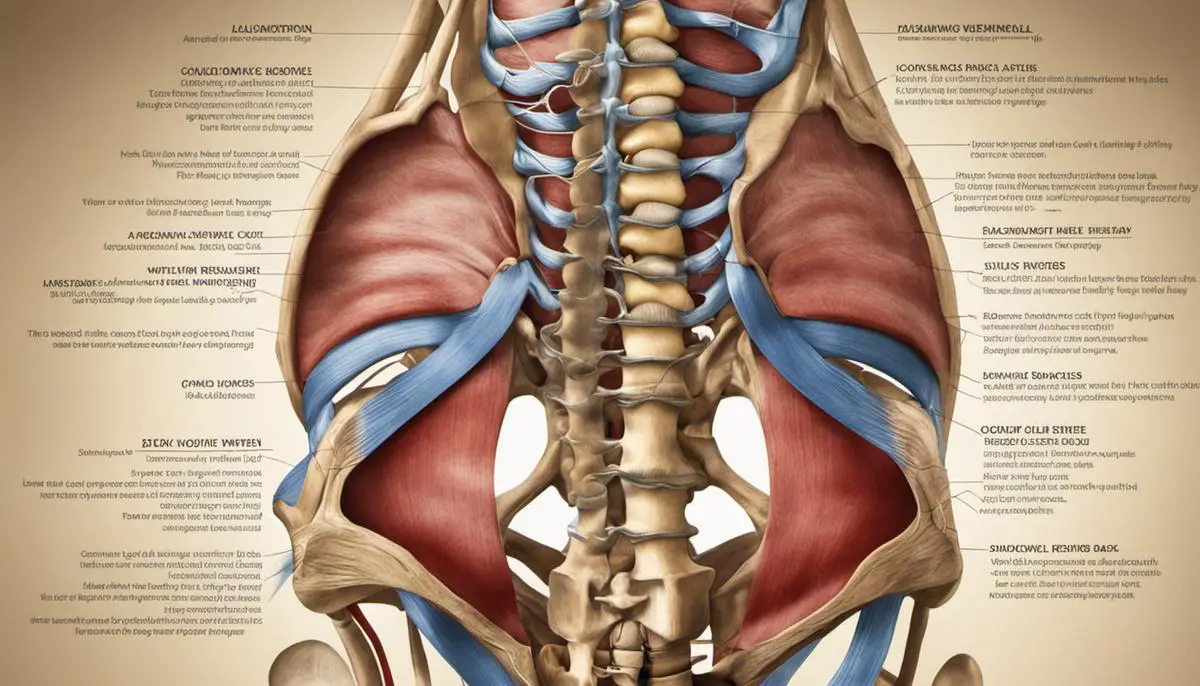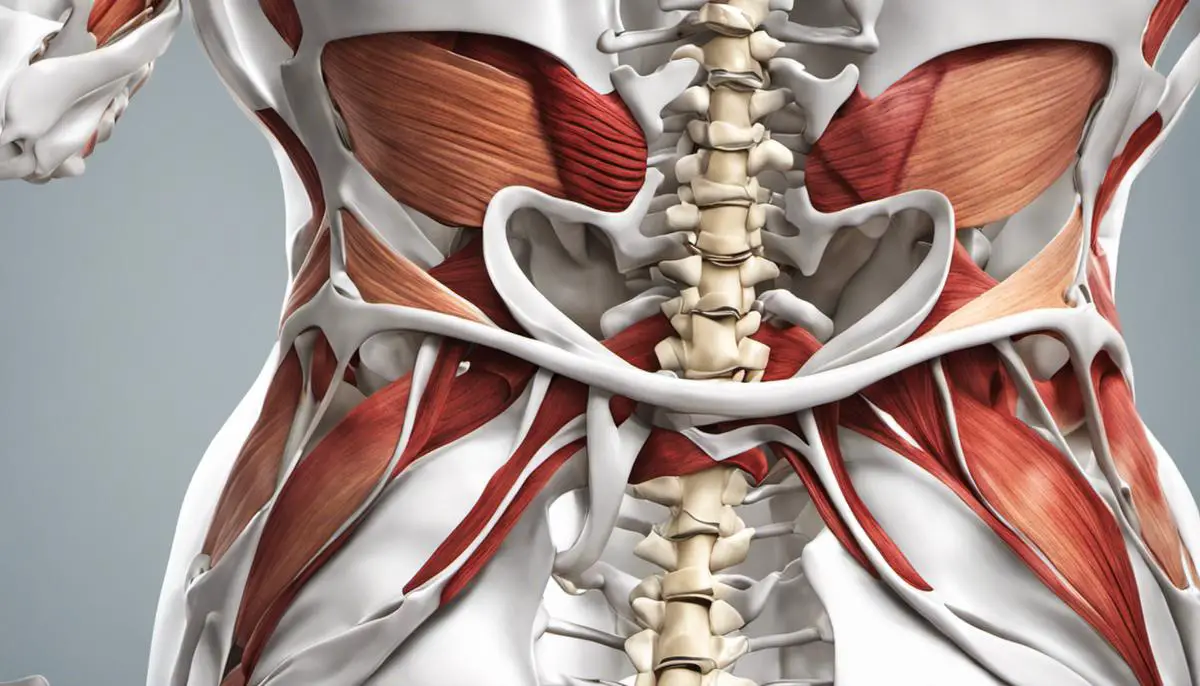Maintaining a healthy lower back is integral for overall well-being and mobility, especially given the role it plays in our daily activities and movements. Gaining a foundational understanding of the lower back anatomy and learning about specific exercises can go a long way in ensuring its strength and flexibility. In this pursuit, knowing the safe exercise techniques further maximizes the benefits of your exercise routine, while putting safety at the forefront. The focus of this exploration covers the composition of the lower back, safe methods to exercise, and dedicated exercises to build strength and improve flexibility in your lower back.
Understanding Lower Back Anatomy
Understanding the Anatomy of the Lower Back
The lower back, also referred to as the lumbar region, is a complex structure composed of bones, muscles, nerves, and various other tissues. To comprehend how to maintain its health, it’s crucial to understand these key components of this region.
The Structure of Bones and Joints in the Lower Back
The bone region of the lower back consists of five vertebrae, known as L1 to L5. These structures form the basis of the vertebral column and bear most of the body’s weight. Between each vertebra, there are flexible intervertebral discs meant to alleviate friction and provide cushion for the delicate spine structure. On the rear side of the vertebrae, facet joints link to permit mobility in the back, allowing us to twist, bend, and stretch.
Important Muscles Supporting the Lower Back
A network of muscles and tendons provide additional stability and mobility to the spine. Major lower back muscles include the erector spinae (long vertebrae-running muscles), quadratus lumborum (responsible for lateral movements and stabilization), and latissimus dorsi (large muscles stretching across the lower and midback). Understanding these muscles can help inform specific exercises to strengthen them.
Nervous System Connection in the Lower Back
The lumbar region plays a substantial role in the body’s nervous system as it’s the house of the spinal cord, which connects the brain to the rest of the body. The vertebrae and discs of the lumbar spine encase the spinal cord and nerves. These nerves branch off from the spinal cord between each pair of vertebrae and transfer signals between the brain and the rest of the body.
Importance of Lower Back Health
Preserving lower back health is imperative since this region is susceptible to injury. As the backbone of most of our movements, maintaining a strong and flexible lower back can prevent a variety of potential issues, from chronic aches to major injuries. Exercises for lower back health will target not just the muscles and joints of the lumbar region, but also compliment the overall wellness of the nervous and skeletal systems.

Safe Exercise Techniques
Understanding Lower Back Anatomy for Safe Exercise
The lower back, medically referred to as the lumbar region, comprises five vertebrae in the spine. Factors like maintaining a good posture, cultivating muscle strength, and maintaining flexibility in the hamstrings can contribute to lower back health. Strains or injury to this area can result from poor technique during exercise. Hence, incorporating safe and effective exercise techniques is critical.
Correct Exercise Posture
Maintaining good posture during exercise is essential in preventing strain or injury to your lower back. When performing standing exercises for your lower back health, keep your chest lifted, your shoulder blades down and back, and your abdominal muscles engaged. Additionally, maintain a slight bend in your knees to prevent locking your joints. It’s also critical to keep your spine neutral, which means not over-arched or excessively bent forward.
Exercise Technique: The Pelvic Tilt
Pelvic tilts can help you maintain a natural curve in your lower spine. Lie flat on your back on a mat, bend your knees, and keep your feet flat on the floor. Tighten your abdominal muscles as you push your lower back into the floor. You may begin to feel a gentle stretch in your lower back. Hold this position for around 10 seconds, then release. Repeat this 10 times.
Exercise Technique: Bridge Exercise
The bridge can strengthen your lower back and your glutes. Again, start on your back with your knees bent and your feet flat on the floor. Keep your arms by your sides, palms down. Lift your hips off the floor until your knees, hips, and shoulders form a straight line. Hold this position for a few seconds before slowly lowering your hips back to the floor. Repeat 10 times.
Exercise Technique: Seated Lower Back Rotational Stretches
This exercise promotes flexibility and helps relieve pain and tension in the lower back. First, sit on an exercise ball or chair with your feet flat on the floor. Keep your spine tall and rotate your back in the direction of your right side. Maintain this position for about 10 seconds, return to the starting position, and repeat on your left side. Do this 10 times for each side.
Remember, maintaining the correct posture and using the right techniques is crucial for exercising safely. Listen to your body and stop or modify the exercise if you experience pain. Regularly practicing these exercises can greatly contribute to improved lower back health.

Specific Exercises for Lower Back Health
Exercise 1: Pelvic Tilts
Pelvic tilts are a gentle exercise that strengthens the lower back and pelvic muscles. Lie down on your back on a mat or the floor, bending your knees and keeping your feet flat on the ground. Keep your arms at your sides. Exhale, engage your abdominal muscles and tilt your pelvis towards your torso, lifting your buttocks slightly off the floor. Breath out and gradually lower your back to the starting position. Repeat this exercise 10-15 times for a full set.
Exercise 2: Bridge Pose
This is another effective lower back exercise. Lie on your back with knees bent and feet flat on the floor. Let your arms rest at your sides, palms upward. Slowly lift your hips and lower back off the floor, pushing with your heels as you rise. Hold the position for 5 to 10 seconds, keeping your abs and glutes engaged, then slowly lower down. Repeat this 10 to 15 times for a complete set.
Exercise 3: Child’s Pose
Child’s Pose is an excellent lower back stretch deriving from traditional yoga. Begin on your hands and knees, then sit back onto your feet while reaching forward with your arms. Relax into the pose and breathe, keeping your arms stretched out in front of you. Your behind should be resting on your heels. This pose stretches the lower back and helps to increase flexibility. Hold for about 30 seconds to a minute, then return to the start position.
Exercise 4: Cat-Camel Back Stretch
Start on your hands and knees with your back straight–this is called a tabletop position. Begin the exercise by arching your back towards the ceiling like a stretching cat, tucking in your tailbone, and dropping your head to look at your navel–this is the cat portion of the stretch. Hold this for 5-10 seconds. Then, lower your belly towards the floor while lifting your head and tailbone towards the ceiling–this is the camel portion of the stretch. Hold this for 5-10 seconds. Repeat this cycle 10-15 times.
Exercise 5: Lower Back Twist
Lower back twists help to increase flexibility in the back and relieve tension. Lie down on your back, placing your arms out at a T shape. Keep your feet flat and knees bent. Slowly let your knees fall to one side while keeping both shoulders flat on the floor. Hold this position for 20-30 seconds, then switch to the opposite side. Repeat this rotation movement 5-10 times on each side.

With the knowledge and application of specialized lower back exercises, you can work towards improving your lower back health. Making these exercises a regular part of your routine can substantially increase your lower back strength and flexibility, contributing significantly to your overall health and preventing potential injuries or strain. Remember, technique remains crucial in all exercises, so ensure you’re performing the movements correctly to reap maximum benefits. Above all, always listen to your body and work within your limits – after all, fitness is not just about strength, but also about resilience and overall wellness.
